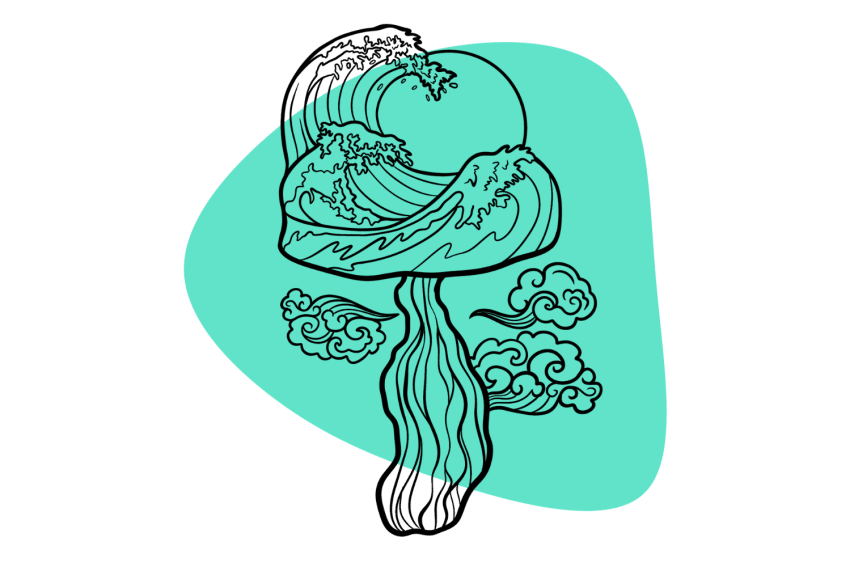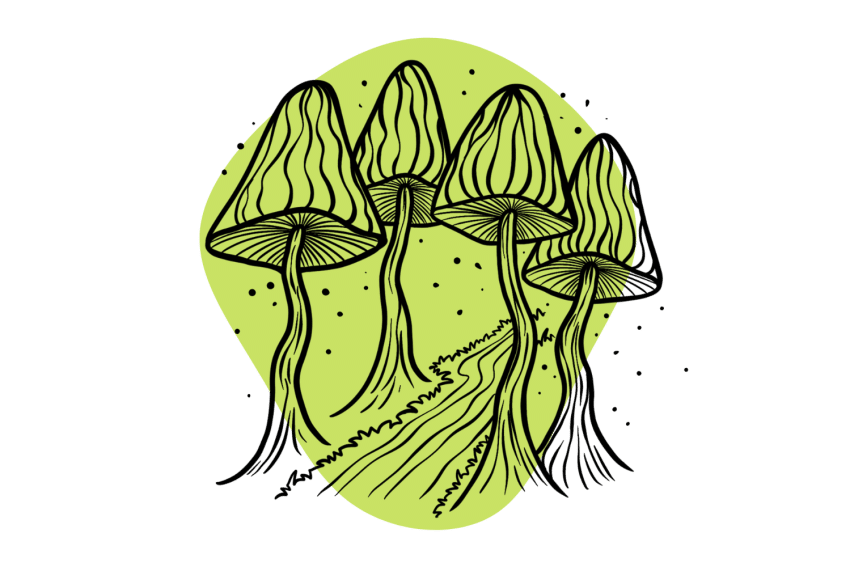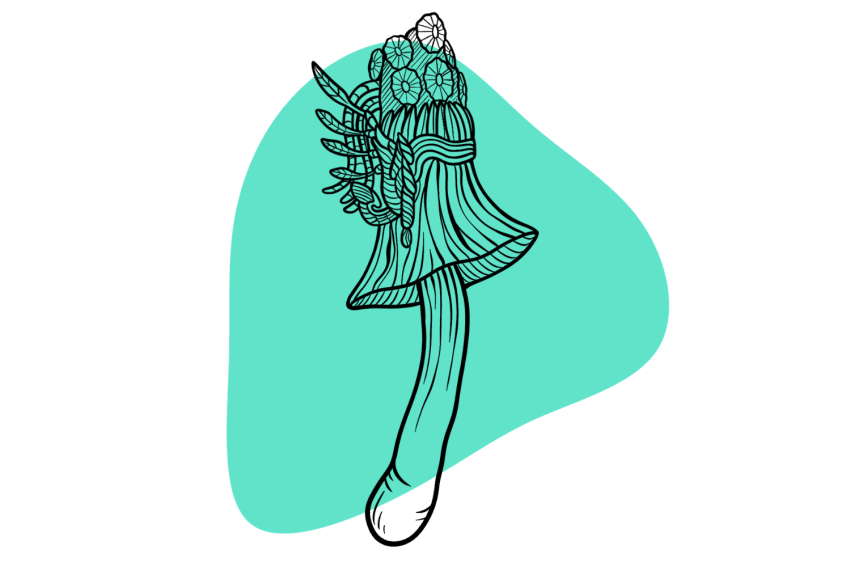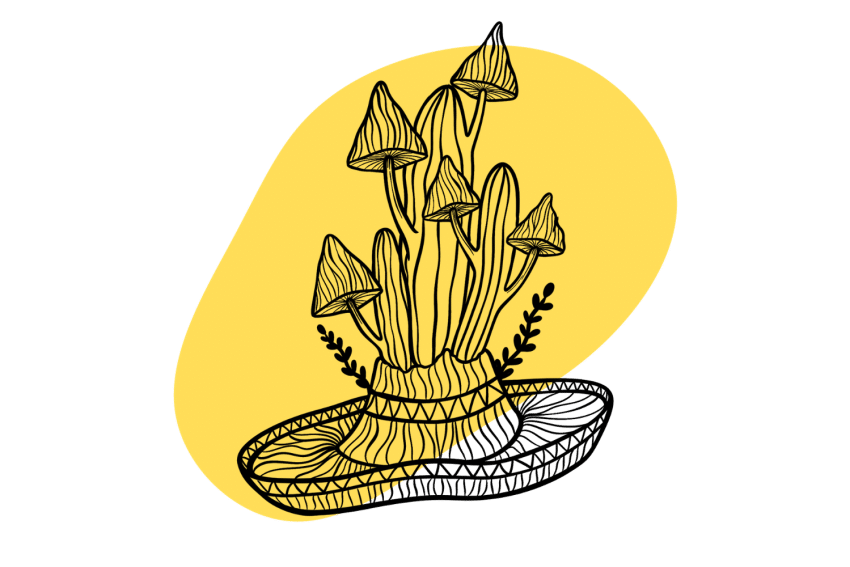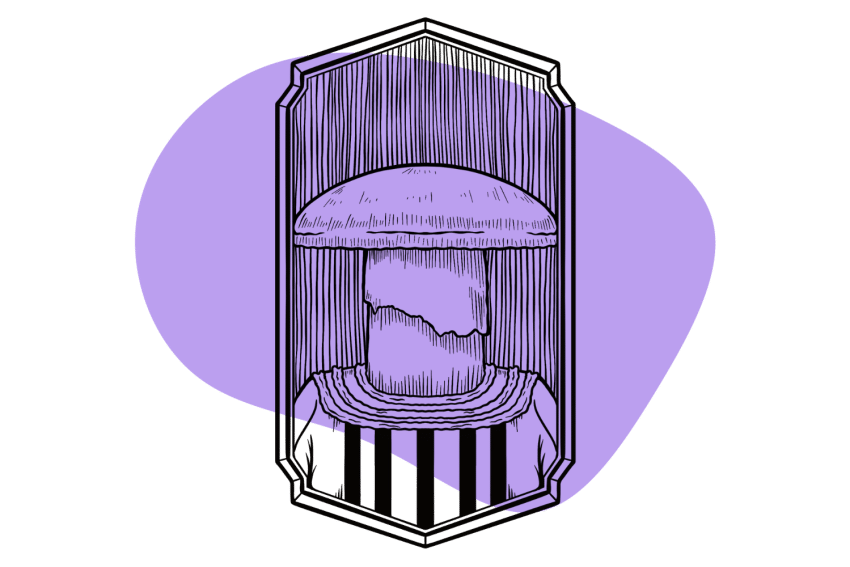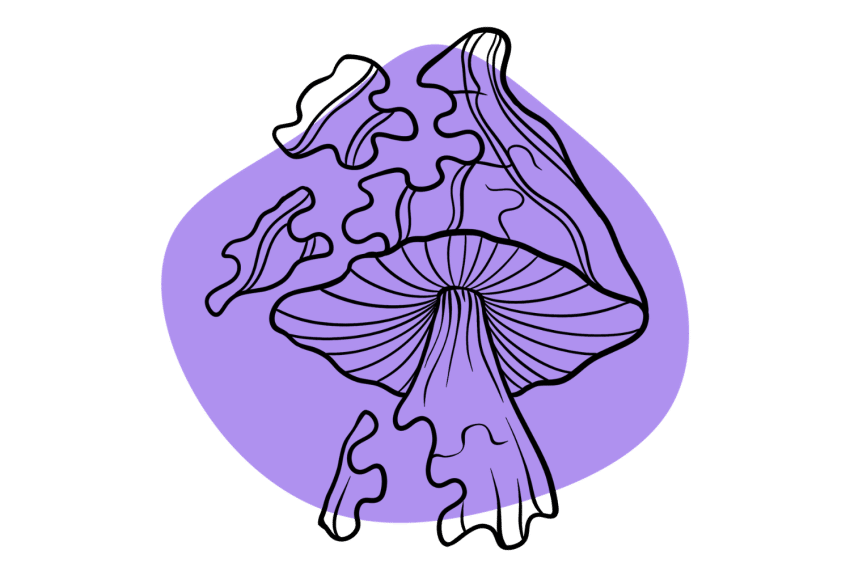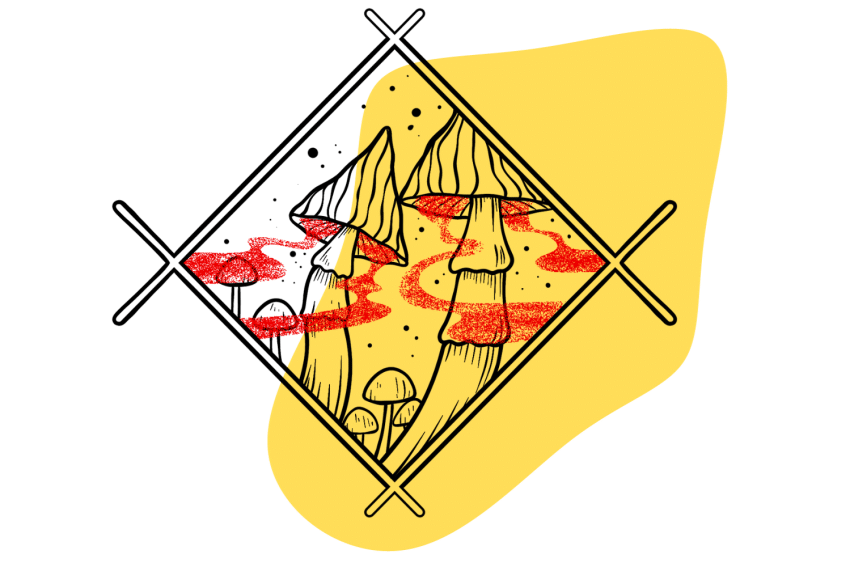Mexican Dutch King: An International Strain of Psilocybe cubensis
Mexican Dutch King is a peculiar multicultural mushroom with a lot going for it. It’s a well-rounded strain of Psilocybe cubensis that can be cultivated with ease. Let’s find out more about it…
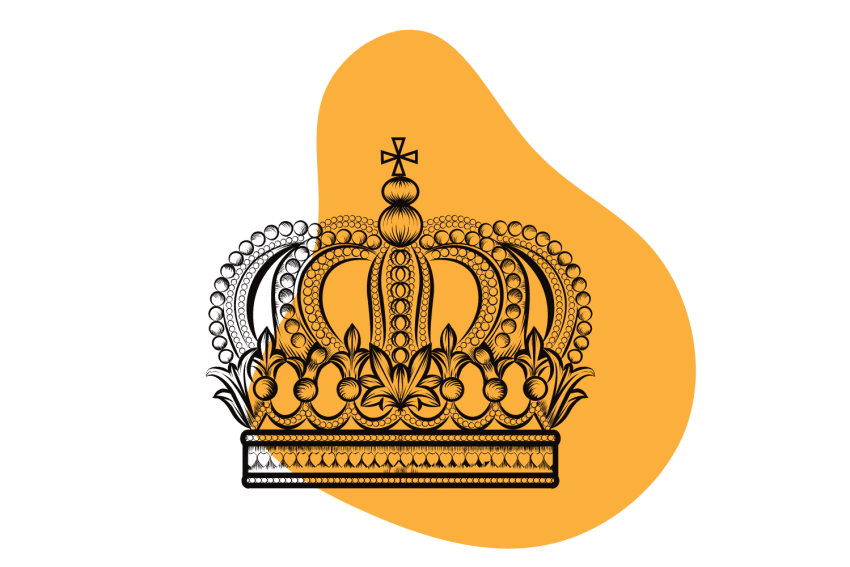
The Mexican Dutch King strain originates from Mexico. However, the variety has been cultivated in the Netherlands for so many years that it has earned its own name.
This strain is known for producing medium to large golden-colored caps and wavy white stems. The rhizomorphic mycelium is extremely aggressive and colonizes substates quickly. It’s disease resistant and a fast and prolific fruiter — making it an easy and fruitful strain to grow.
The potency of Mexican Dutch King mushrooms is above average — producing somewhere in the range of 0.90% to 1.80% total tryptamines (psilocybin, psilocin, baeocystin, and other related alkaloids).
Mexican Dutch King is an excellent all-around strain that’s perfect for beginner cultivators, keen mycologists, and commercial growers alike. Big yields of potent mushrooms are possible with minimal equipment, experience, and time.
In this article, we’ll be assessing the Mexican Dutch King strain by looking at:
- The history of the Mexican Dutch King strain
- The potency of Mexican Dutch King mushrooms
- Strains that share similarities with Mexican Dutch King shrooms
- Where to buy Mexican Dutch King spore samples
- How to cultivate Mexican Dutch King mushrooms
- Some other easy-to-grow strains of Psilocybe cubensis
I’ll also be answering a few different questions about Psilocybe cubensis strains and other species within the Psilocybe genus.
Mexican Dutch King Specs:
| Potency | Above Average |
| Cultivation | Beginner |
| Species | Psilocybe cubensis |
| Substrate Recommendation | BRF (Brown Rice Flour) or Rye Grain |
| Sold By | Spores 101 (🇺🇸/🇨🇦), Sporeslab (🇨🇦), Miracle Farms (🇺🇸/🇨🇦), The Magic Mushrooms Shop (🇪🇺) |
History of Mexican Dutch King
This strain was originally collected from Mexico. We’re not 100% sure of who collected the original sample or when exactly it was brought back to the West. However, we know that the popular strain available now was developed in Holland.
This was a commercial strain that was produced to sell in the “Smart Shops” in the Netherlands before psilocybin mushrooms became illegal in the country. When you look at the traits of the strain, this statement makes complete sense.
It’s a fast colonizer, fruiter can be grown easily, and good yields over several flushes are easily obtainable — all traits that make a brilliant commercial strain.
Because this Mexican strain has been cultivated in Holland for so long and is a favorite among mushroom users and psychotourists over there, it gained the name “Mexican Dutch King.”
Although magic mushrooms are now illegal to sell in the Netherlands, the strain lives on. Spores and magic truffles are still legal in the country, and Mexican Dutch King spores have made it across the border to dozens of different vendors across the globe.
This strain is almost as prevalent as strains such as Golden Teacher, the Koh Samui strain, and Penis Envy. It’s still a popular choice among mushroom users in Europe and is found a lot on the “black market” there — probably because of its commercial traits and easily-obtainable spores.
Related: Magic Mushroom Strain Guide (100+ Strains Explained)
Mexican Dutch King Potency & Psilocybin Content
The Mexican Dutch King strain has above-average potency. These mushrooms are capable of producing total tryptamine levels of between 0.90% to 1.80%.
Despite how established this strain is and its current popularity, a sample is yet to make it into the Psilocybin Cup. However, from first-hand user reports, we have a pretty good idea of what the effects are like.
You can expect euphoria, a strong body buzz, a “fresh perspective,” and mental clarity after consuming these shrooms. They’re not particularly visual in doses of 3.5 grams or less, but distortion is noticeable.
Where to Buy Mexican Dutch King Spores
The Mexican Dutch King strain is well-established. It has been on the market since the early 2000s, and spore samples are available across the globe. You’ll find Mexican Dutch King spore samples in the form of sterile spore-filled syringes, spore prints, vials, and occasionally swabs.
If you want to cultivate Mexican Dutch King mushrooms, I’d recommend purchasing a spore-filled syringe — this is the easiest way to deliver the spores to your substrate while being as sterile as possible.
Here’s where you can find Mexican Dutch King spores across the globe:
- Canada — You’ll find Mexican Dutch King spore samples in the form of prints and syringes at Spores 101.
- The United States — Mexican Dutch King spore samples are available from Ralphsters Spores or Spores 101 in the form of spore syringes, prints, and swabs.
- Europe — If you live in Europe, you can find Mexican Dutch King spore samples from The Magic Mushrooms Shop. Here, genetics are available as spore-filled syringes, prints, and vials.
Mexican Strains That Are Similar to Mexican Dutch King
Mexican Dutch King doesn’t have any known relatives. However, the original sample was discovered somewhere in Mexico. The strain has been developed over several years by Dutch cultivators in Holland, but its roots still lie in Mexico.
Here are some other similar Mexican strains that may be distant relatives of the Mexican Dutch King strain:
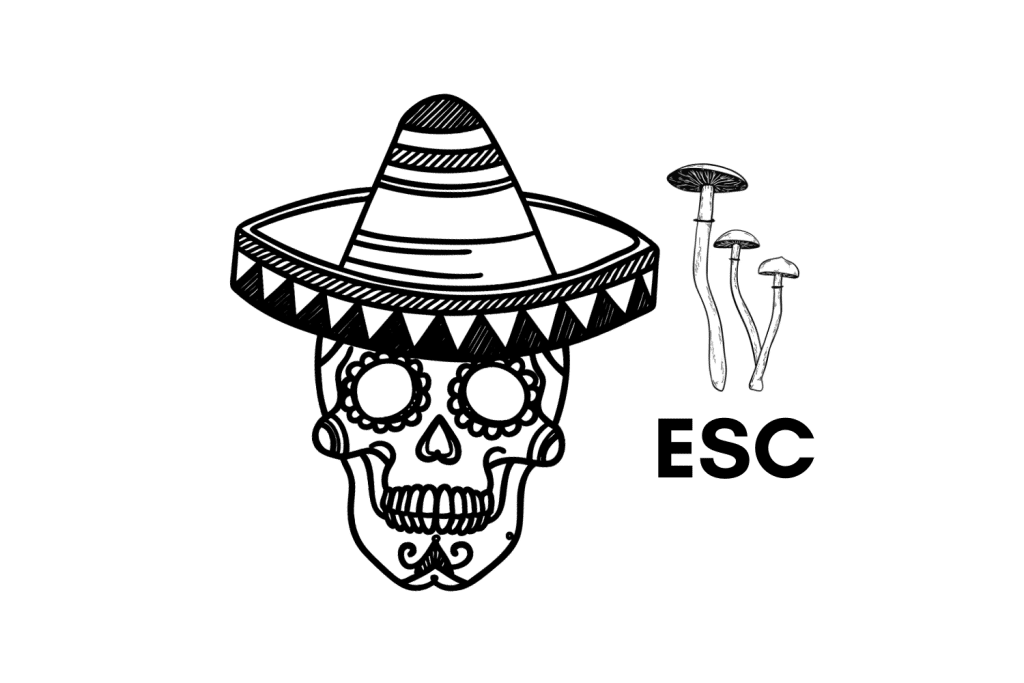
1. The Escondido Strain
The Escondido strain is remarkably similar to the Mexican Dutch King strain. It produces similar-sized mushrooms with the same coloration and visual characteristics. It produces slightly lower potency levels — somewhere in the region of 0.50% to 0.90% total tryptamines.
If you put a Mexican Dutch King mushroom next to an Escondido mushroom, you’d struggle to tell them apart. Perhaps these strains are closely related.
The Escondido strain is a fast colonizer, a prolific fruiter, and is easy to grow thanks to its contamination resistance and ability to grow in an unoptimized environment. It’s a great strain for beginner growers and those looking to grow great numbers of mushrooms in a short period.
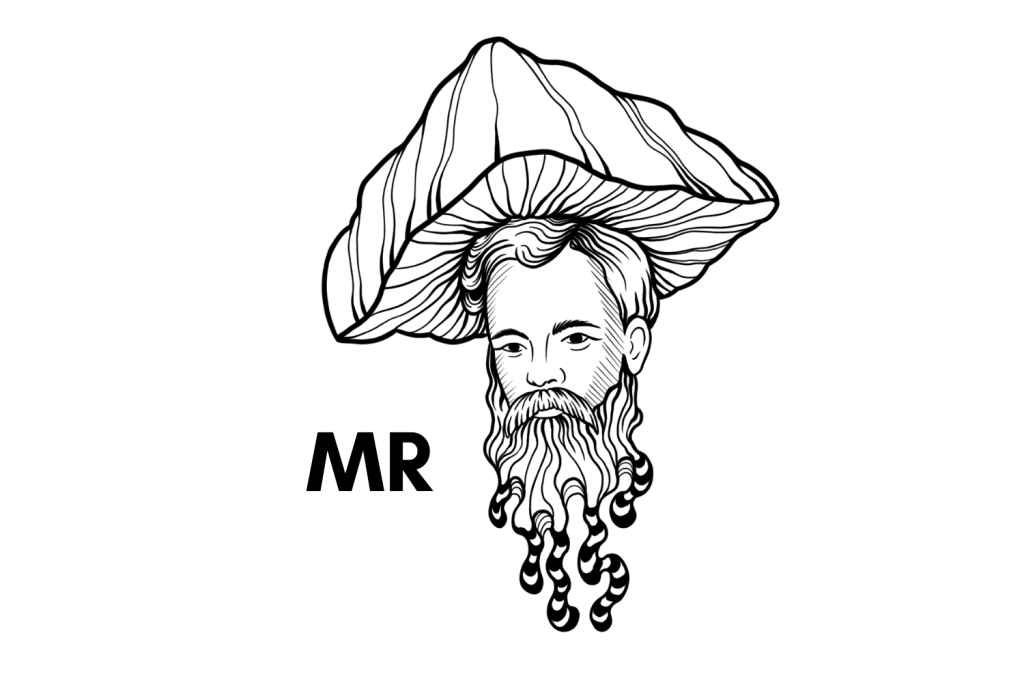
2. The Matias Romero Strain
The Matias Romero strain is similar to the Mexican Dutch King strain in looks and potency. However, it does have some differences.
Matias Romero shrooms are renowned for their thick, watery stems and caps that shrink significantly after drying.
These mushrooms suck up a lot of water during the fruiting phase, so humidity levels must be kept high — otherwise, you risk causing aborts. It’s a little more difficult to grow than the average Mexican strain, so it should be targeted by someone with a little more cultivation experience.
Potency-wise, the Matias Romero strain is pretty average and is capable of producing total tryptamine levels of around 0.50% to 0.90%.
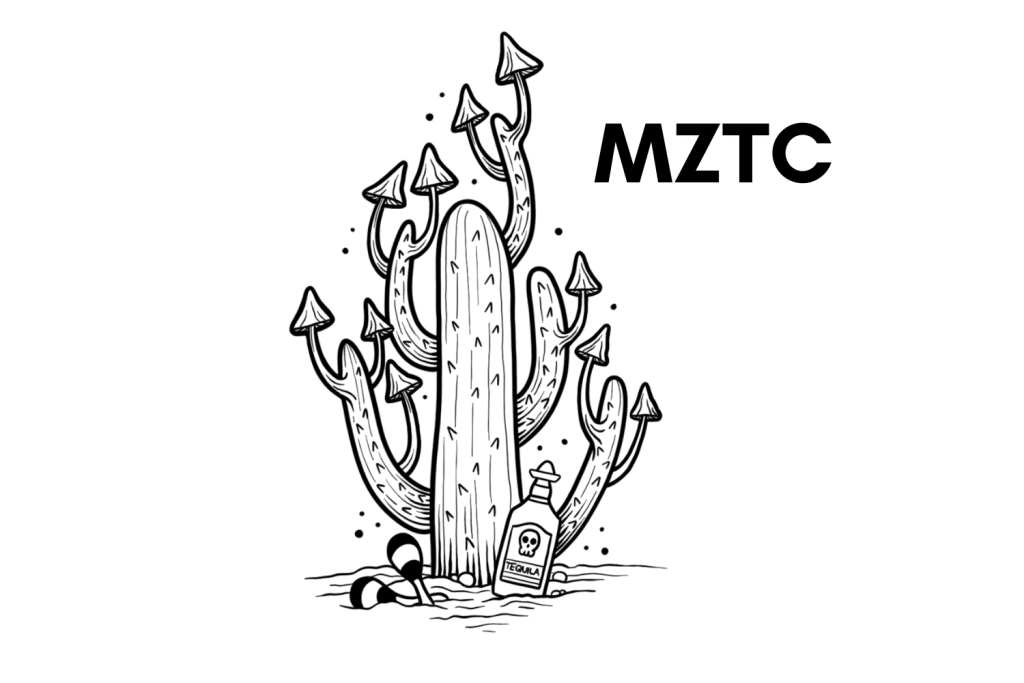
3. The Mazatapec Strain
The Mazatapec strain comes from the mountainous regions of Sierra Mazateca in Mexico. This was one of the first strains of Psilocybe cubensis to make it back to the West, alongside the Huautla strain and some of the McKenna stock.
This strain has long white stems and bulbous golden brown caps. It looks and feels similar to the Mexican Dutch King strain, but the mushrooms are a little smaller. The Mazatapec strain is a fast colonizer, a quick fruiter, and can withstand an unoptimized growing environment.
This strain’s potency is average — producing around 0.61% psilocybin and 0.08% psilocin (71% total tryptamines).
How to Grow Mexican Dutch King
Out of the many psilocybin-producing mushroom species, Psilocybe cubensis is one of the easiest to cultivate in an artificial environment. However, some strains are easier to grow than others.
Related: List of Psilocybin Mushroom Species (And Other Psychoactive Fungi)
Mexican Dutch King mushrooms can be grown in the same way as other Psilocybe cubensis mushrooms. This strain is relatively fast to colonize and is contamination-resistant — making it easy to grow, even for beginners.
The easiest way to cultivate Mexican Dutch King mushrooms from spores is to use a method known as PF-Tek. However, If you’re not up to the challenge, why not start with a ready-to-fruit magic mushroom grow kit — this is the easiest way for beginners to enter the world of cultivation, and it requires next to no effort.
PF-Tek is the perfect cultivation technique for beginner growers. It requires very little in the way of experience, knowledge, and equipment. The equipment you need can be purchased easily from general stores and doesn’t have to cost you a fortune.
Here’s how Mexican Dutch King mushrooms can be grown using PF-Tek:
1. Substrate Preparation
First, a substrate of your choice should be placed in a series of mason jars. Mexican Dutch King isn’t fussy in terms of substrate and will do well on pretty much anything. However, I’d recommend starting with BRF (brown rice flour and vermiculite) or rye grain.
Once the jars are filled, they’ll need sterilizing. This can be done by placing them into a pressure cooker for 30 minutes before letting them cool inside for two to three hours.
2. Inoculation
Once the jars have cooled completely, they can be removed from the pressure cooker and inoculated with 2 CCs of liquid from a syringe filled with Mexican Dutch King spores. Everything must be completely sterilized during this procedure to ensure the jars are free of contamination.
Once inoculated, the jar lids can be screwed on tight and covered with aluminum foil to ensure they remain contaminant-free throughout the next process.
3. Incubation
Once the jars are inoculated with spores, they must be given time for the mycelium to form over the entire substrate. They can be left in a warm dark area provided they’re kept between 20 and 28 ºC (68 to 82 ºF).
A simple incubator can be constructed with a couple of containers and an aquarium heater to keep the environment around the jars more stable. Mexican Dutch King spores take around two weeks to fully colonize the substrate.
4. Fruiting
Now it’s time for the exciting part. Once the jars are completely white with mycelium, they’re ready for fruiting. The resulting mycelium cakes can be removed from the jars and placed inside a simple fruiting chamber — this is essentially a container with holes drilled into it for ventilation.
The temperature during this phase should be between 10 to 20 ºC (50 to 68 ºF). This can be achieved by using a simple heat mat — these are often sold for reptile vivariums. The humidity can be kept stable by regularly spraying the inside walls of the chamber with distilled water.
After a few days to a week, the first mushrooms will begin to appear. These can be harvested when mature and dried simply in a well-ventilated area or a dehydrator for long-term storage. The cakes will continue to fruit sporadically for the coming weeks until the colonies eventually succumb to contamination.
This was just a brief rundown of how to cultivate the Mexican Dutch King strain. If you want to learn how to grow Psilocybe cubensis mushrooms properly, you’ll need more information. Check out our in-depth cultivation guide: How to Grow Magic Mushrooms: The Easy Way
Other Easy-to-Grow Beginner Strains
The easiest mushrooms to grow are strains that have traits like high contamination resistance, grow relatively quickly, and are resilient to environmental fluctuations.
Most Psilocybe cubensis mushrooms are like this, but some of the more niche options, like some of the albino strains or truffle-forming strains, are often harder to get the most out of without a lot of cultivation experience.
Here are some of our favorite beginner strains:
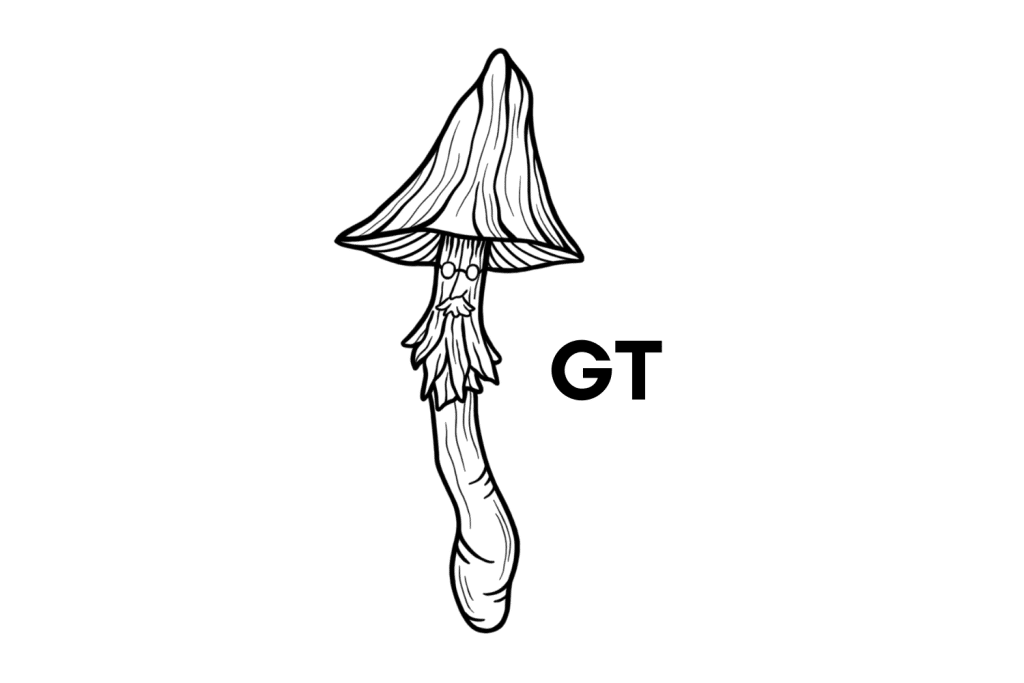
1. Golden Teacher Strain
The Golden Teacher strain has been around for decades. This OG Psilocybe cubensis strain is famed for being extremely easy to grow — it’s often the first choice for newbies on the scene.
Golden Teacher is contamination-resistant, colonizes aggressively, and is capable of producing decent yields over several healthy flushes before eventually succumbing to mold.
This strain isn’t much to look at, nor is it particularly potent — producing average psilocybin levels of 0.66% — but it’s probably the easiest P.cubensis strain for the beginner.
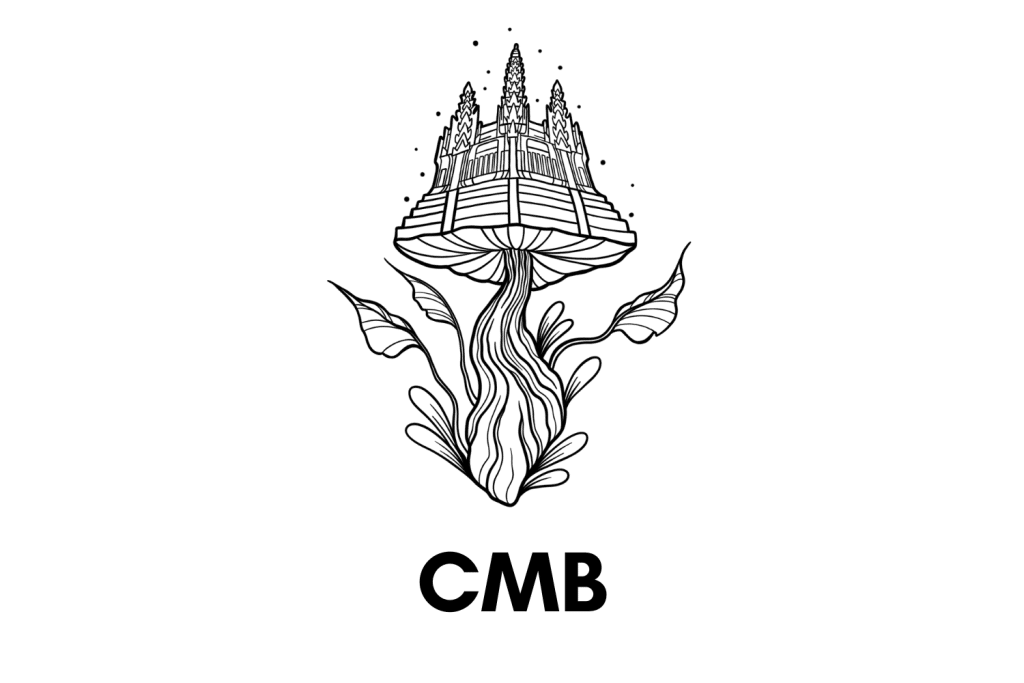
2. The Cambodian Strain
The Cambodian strain was discovered by the legendary mycologist John “Mushroom” Allen during his travels through Southeast Asia. This strain is notorious for producing dense flushes. It’s incredibly resistant to contamination and unoptimized growing conditions, making it an easily approachable strain for the beginner.
The Cambodian strain is fast to colonize, quick to fruit, and capable of producing good yields over several flushes. Potency-wise, these shrooms are pretty weak. Tryptamine testing of the Cambodian mushroom sample produced a psilocybin level of only 0.45% and a total tryptamine level of just 0.57%.
The ease of growth and lower potency make this strain the ideal choice for the newcomer to cultivation and the consumption of psilocybin mushrooms.
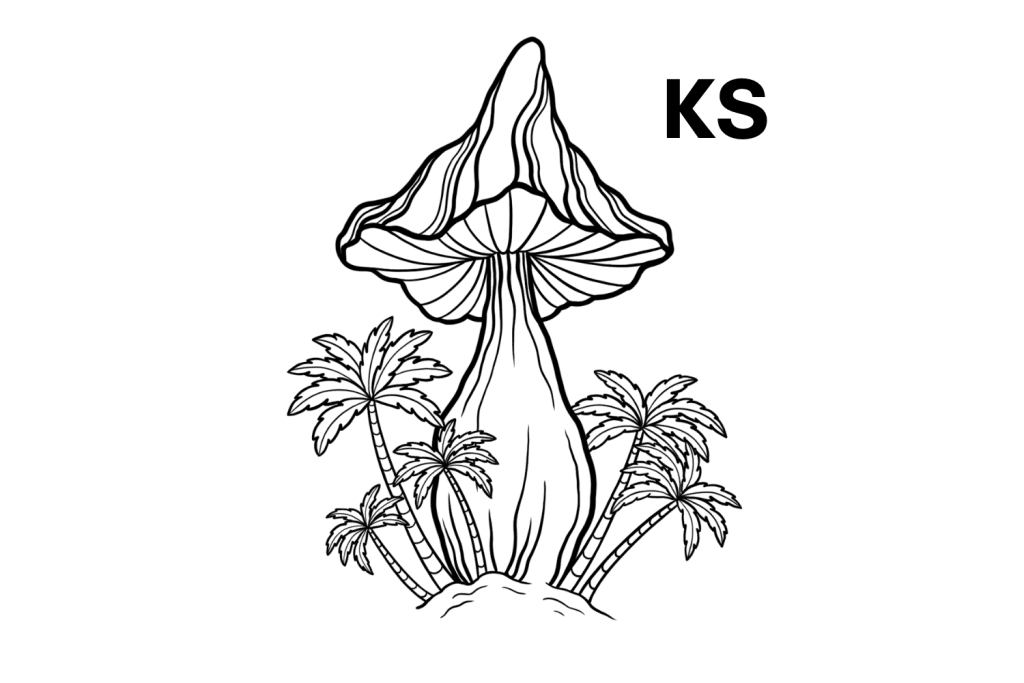
3. The Koh Samui Strain
The Koh Samui strain was discovered by John Allen while visiting the island of Koh Samui in Thailand during his travels in the 1990s. This strain is famed for producing “fatasses” — short, fat mushrooms with thick stems.
The Koh Samui strain — like many others from the region — is contamination resistant and can thrive in an unoptimized environment. It’s capable of producing large yields over several healthy flushes before eventually succumbing to bacteria.
Koh Samui mushrooms have average potency but pack a punch. Testing shows that the average mushroom produces around 0.69% psilocybin with a total tryptamine level of 0.86%.
This is a well-rounded strain that’s ideal for the beginner that wants to grow large amounts of peculiar-looking mushrooms.
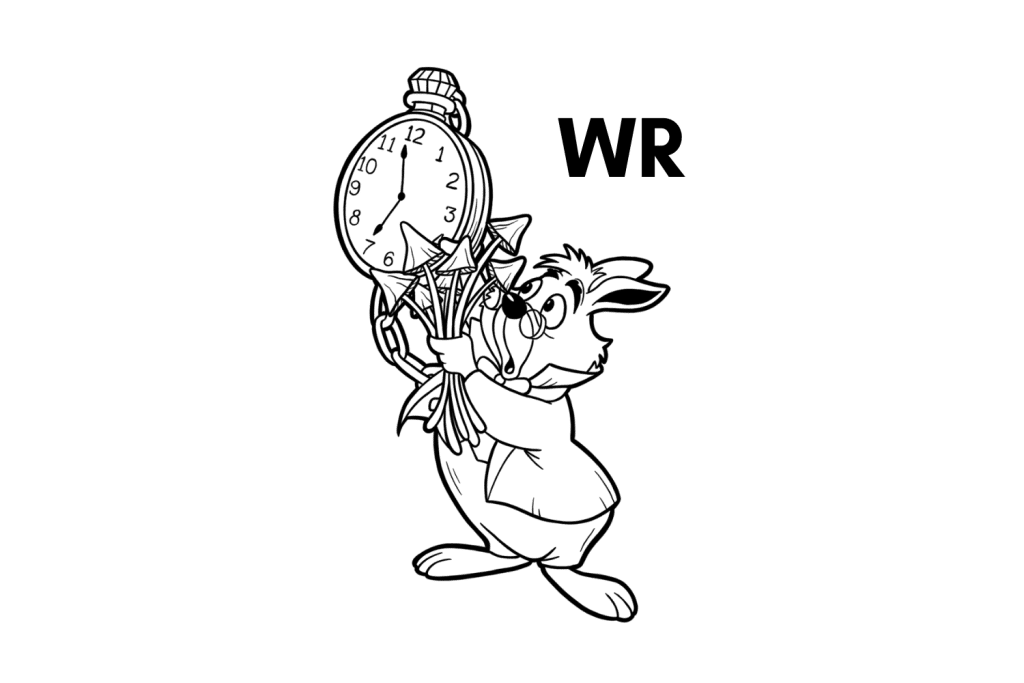
4. The White Rabbit Strain
This one is a little different from your typical “beginner strain.” The White Rabbit strain is incredibly potent. These mushrooms have an estimated total tryptamine content of over 1.80% and are likely capable of producing psilocybin levels that are worthy of strains such as Tidal Wave.
This strain is a hybridization of Albino Penis Envy and the Moby Dick strain. The result is a completely white albino shroom with staggering potency levels.
Surprisingly, this potent albino is remarkably easy to grow. It’s an aggressive colonizer, is disease resistant, and can cope with an unoptimized environment.
Although this isn’t the first strain I’d recommend to the beginner cultivator, it’s the perfect option for the ambitious newbie who wants to grow something aesthetically and chemically beautiful.
Frequently Asked Questions
1. What’s the Largest Psilocybe cubensis Strain?
The biggest Psilocybe cubensis strain was long believed to be the Orissa India strain. This strain once held the record for the largest ever cultivated cubensis mushroom, but it has since been overtaken by a sample of the South American strain grown by “Mr. G” — an amateur mycologist and frequent Shroomery member.
Although the South American strain currently holds the title for “largest cube,” both strains are pretty on par in terms of size.
Orissa India and South American strain mushrooms are capable of reaching heights of over 35 centimeters (14 inches) with caps of over 13 centimeters (5 inches) in diameter.
2. Where Do Psilocybe cubensis Mushrooms Grow Naturally?
Psilocybe cubensis is the most common species of psilocybin-producing mushroom on the planet. This species can be found growing naturally in six out of the seven continents.
This is a pan-tropical species that favors warm, humid environments, but it’s incredibly tolerant in terms of where it grows. Psilocybe cubensis can be found at both low and high altitudes, in wet and dry climates, and growing on a variety of substrates.
These are the countries you’ll find Psilocybe cubensis mushrooms growing:
- Argentina
- Australia
- Barbados
- Belize
- Bolivia
- Brazil
- Cambodia
- Colombia
- Costa Rica
- Cuba
- The Dominican Republic
- Fiji
- French Guiana
- Guadalupe
- Guatemala
- Hawaii
- India
- Jamaica
- Malaysia
- Martinique
- Mexico
- Nepal
- New Zealand
- Paraguay
- Peru
- The United States (Gulf Coast States primarily)
- Tasmania
- Thailand
- Trinidad
- Uruguay
- Vietnam
Related: Where do Magic Mushrooms Grow (And How to Find Them)
3. Are Psilocybe cubensis Mushrooms Legal in the Netherlands?
Although Holland is a particularly liberal country in terms of its drug legislation, psilocybin-producing mushrooms, such as Psilocybe cubensis, have been illegal since 2008.
Psilocybin mushrooms were decriminalized alongside cannabis and other soft substances before this date. In fact, the legality of the mushrooms attracted thousands of tourists to the country. Strangely though, psilocybin-producing sclerotia — or magic truffles as they’re commonly called — are completely legal.
Magic mushroom grow kits that have substrates already colonized with mycelium are also legal to sell and buy. However, as soon as the lids are taken off, and mushrooms begin to sprout from the mycelium, they become illegal.
Although you can’t purchase magic mushrooms legally in the Netherlands, you can find magic truffles for sale in dispensaries known as “Smart Shops” in the larger cities across the country. These truffles come from several different psilocybin-producing fungi species, such as Psilocybe Mexicana and Psilocybe cubensis.

